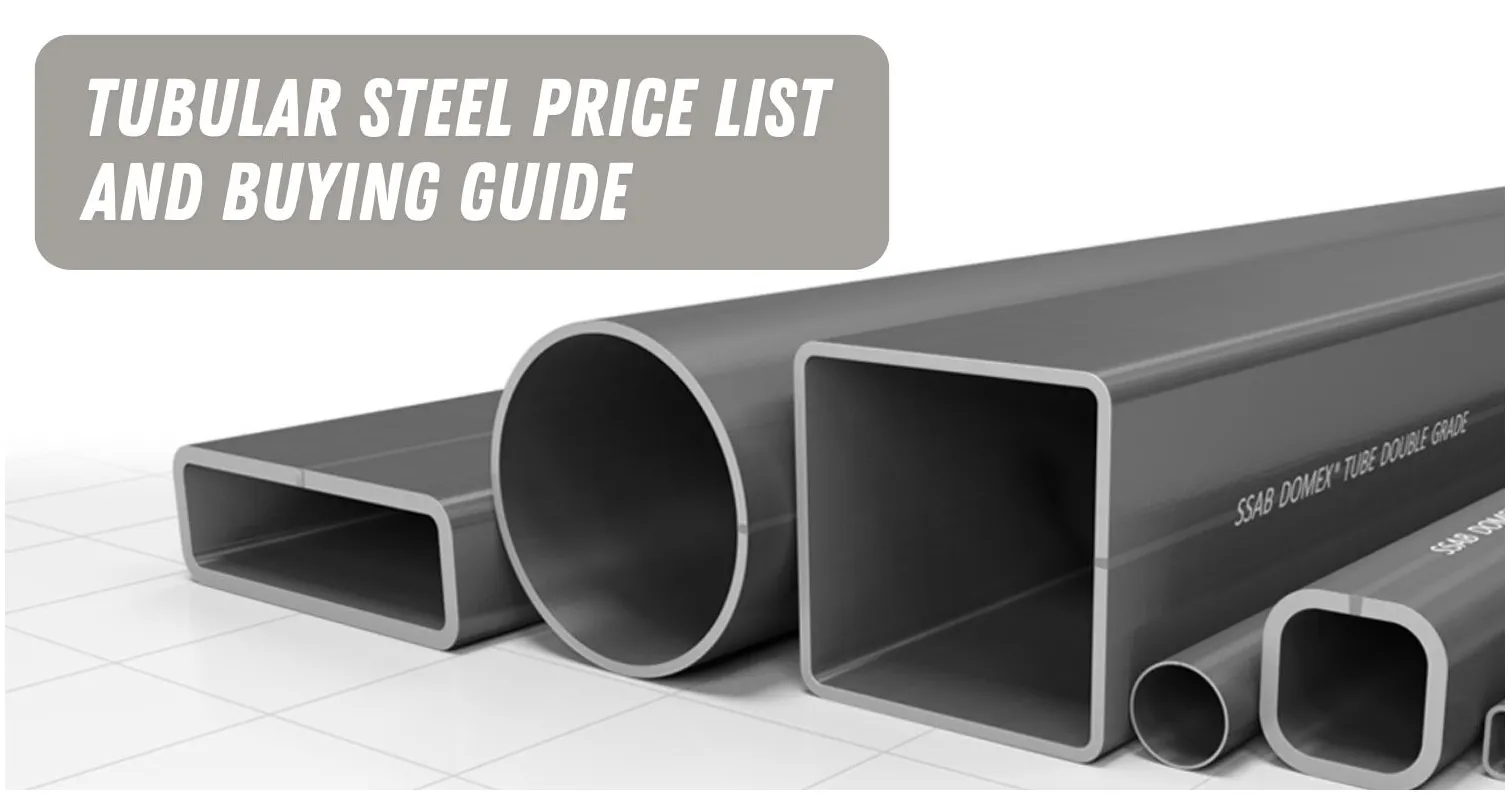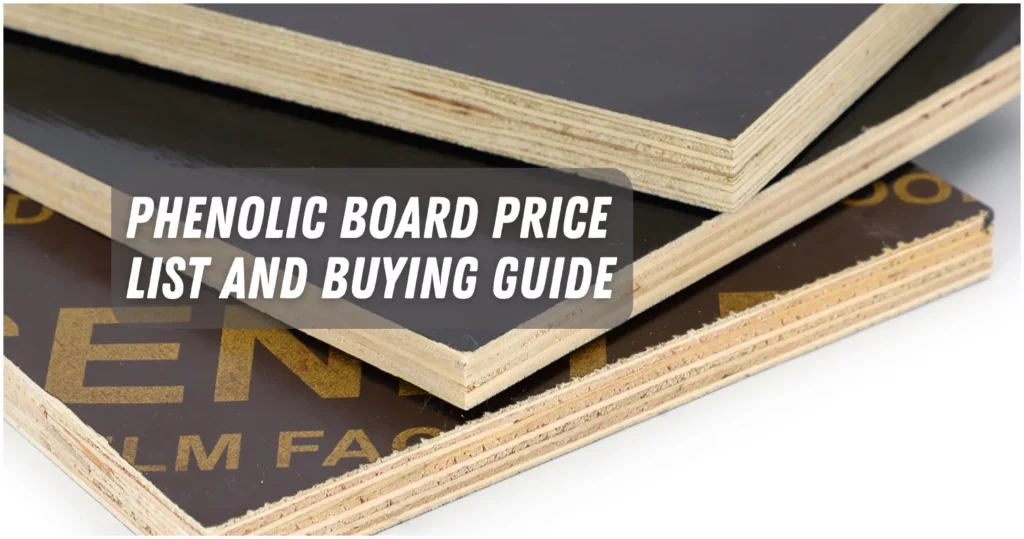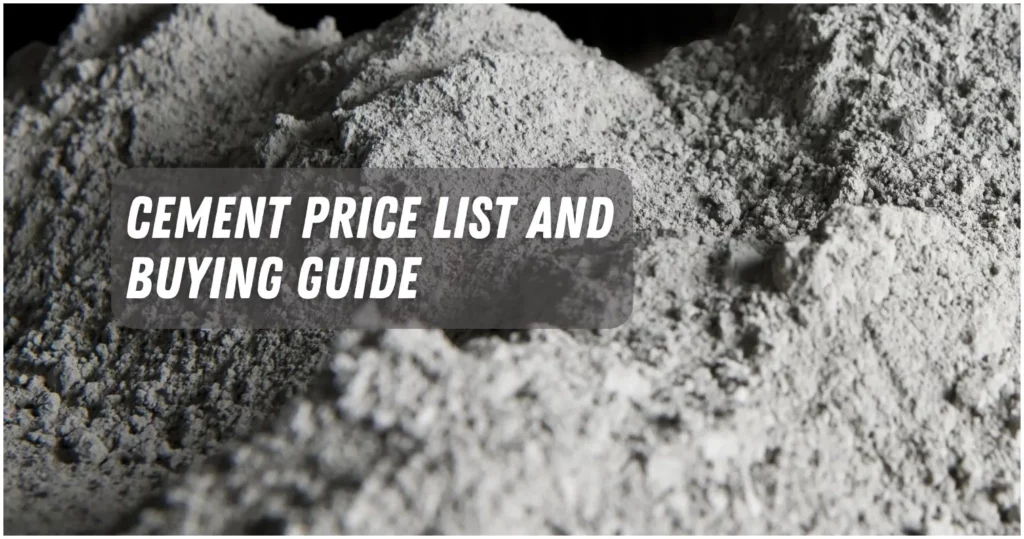Tubular steel may be a good option for your building projects if you’re looking for a strong, adaptable, and cheap material at a reasonable price.
Tubular steel, also called Hollow Structural Section (HSS), is a type of metal shape that looks like a hollow tube.
Depending on what it is being used for, it can be weld or not for many different fields, like building, engineering, the automotive industry, and furniture.
In this article we will explain what tubular steel is, how it can be used, what its pros and cons are, and what you should know about it.
We will also give you the current size chart and price list for tubular steel in the Philippines that usually range from ₱245 to ₱1,183.
What is Tubular Steel?

Tubular steel is a type of steel that is made into a tube or pipe. It is made by rolling a flat sheet of steel into a cylinder form and then welding the edges together.
Another way to make it is to push melted steel through a die that has the shape you want.
Tubular steel can be round, square, rectangular, or oval, among other forms and sizes. It can also have different lengths and wall thicknesses.
In the Philippines, the most popular sizes of tubular steel are 2″ x 2″ x 2 mm, 4″ x 4″ x 4 mm, 25 x 25 x 1 mm, and 50 x 50 x 1 mm.
Uses of Tubular Steel

Tubular steel has many uses in various sectors, such as:
- Construction: Buildings, bridges, towers, scaffolding, roofs, trusses, columns, beams, etc. all use tubular steel as supporting parts. It can also be used as furniture, fence, railing, or gates.
- In engineering, tubular steel is used to make parts for machines, tools, vehicles, pipelines, boilers, heat exchangers, etc. It can also be used to run lines or cables for electricity.
- Automobiles: Parts made of tubular steel are used in cars, trucks, buses, motorbikes, bicycles, and other vehicles. It can also be used to make car frames or chassis.
- Furniture: Tables, chairs, sofas, beds, cabinets, shelves, etc. all have frames or legs made of tubular steel. It can also be used to make furniture more beautiful or artsy.
Tubular Steel Price List and Size

The size, shape, thickness, quality, amount, supplier, and market demand all affect the price of tubular steel in the Philippines.
The table below shows the current retail prices in Philippine Peso per piece for tubular steel
| Size | PRICE |
|---|---|
| 20 mm x 20 mm x 1.0 mm | ₱245 |
| 20 mm x 20 mm x 1.0 mm | ₱305 |
| 25 mm x 25 mm x 1.0 mm | ₱326 |
| 25 mm x 25 mm x 1.2 mm | ₱400 |
| 50 mm x 25 mm x 1.0 mm | ₱444 |
| 25 mm x 25 mm x 1.0 mm | ₱445 |
| 32 mm x 32 mm x 1.0 mm | ₱457 |
| 50 mm x 25 mm x 1.2 mm | ₱483 |
| 50 mm x 50 mm x 1.0 mm | ₱494 |
| 25 mm x 25 mm x 1.0 mm | ₱573 |
| 50 mm x 50 mm x 1.2 mm | ₱606 |
| 32 mm x 32 mm x 1.2 mm | ₱634 |
| 32 mm x 32 mm x 1.0 mm | ₱665 |
| 50 mm x 25 mm x 1.0 mm | ₱675 |
| 50 mm x 25 mm x 1.5 mm | ₱746 |
| 75 mm x 50 mm x 1.2 mm | ₱749 |
| 32 mm x 32 mm x 1.5 mm | ₱899 |
| 50 mm x 50 mm x 1.5 mm | ₱941 |
| 75 mm x 50 mm x 1.5 mm | ₱1,183 |
Tubular Steel Advantages and Disadvantages

When compared to other products, tubular steel has many pros and cons. Here are a few examples:
Advantages:
- Strength: Tubular steel has a high strength-to-weight ratio and can handle big loads and stresses.
- Durability: Tubular steel has good corrosion and wear and tear resistance. With the right care, it can last for a long time.
- Versatility: Tubular steel can be made into different shapes and sizes to fit a wide range of uses and designs.
- Affordability: Tubular steel is relatively cheaper than other products and can save money in the long run.
Disadvantages:
- Weight: Tubular steel is heavier than some other materials, which can make the building or foundation have to hold more weight.
- Welding: To put pieces of tubular steel together, you have to weld them. If you don’t do welding right, it can change the quality and power of the material.
- Bending: It can be hard to bend or curve tubular steel without special tools or skills.
- Availability: Tubular steel might not be easy to find in all places.
Things You Should Know About Tubular Steel
Before you buy or use tubular steel for your projects, here are some things you should know about it:
- How strong is tubular steel?
The form, size, thickness, and quality of tubular steel affect how strong it is. Most of the time, square or rectangular tubes are stronger than round ones, and bigger tubes are stronger than thinner ones. The strength of steel can also be changed by how it is welded, bent, or cut. - What is the size of tubular steel?
Outer diameter (OD), inner diameter (ID), and wall thickness (WT) are the ways to measure tubular steel. For example, a 2″ x 2″ x 2 mm piece of tube steel has an outside diameter of 2″, an inside diameter of 1.92″, and a wall thickness of 0.08″. - Does tubular steel rust?
Yes, tubular steel can rust when it comes in contact with water, oxygen, or chemicals that break it down. To keep it from rusting, you should paint, galvanize, or powder coat it. - Is tubular steel durable?
Tubular steel lasts a long time if it is taken care of and kept safe from damage. It’s important to clean and check for cracks, dents, or holes on a regular basis. Any harm should be fixed right away or replaced.
Tubular steel is a great building resource for projects that need to be strong, durable, flexible, and inexpensive.
If you want to buy tube steel in the Philippines, you should look online for a reliable price list and size chart.
We hope this piece has taught you more about tubular steel and its uses, pros and cons, and other things you should know.
If you have any questions or thoughts, you can write them down below.
[ratings]

